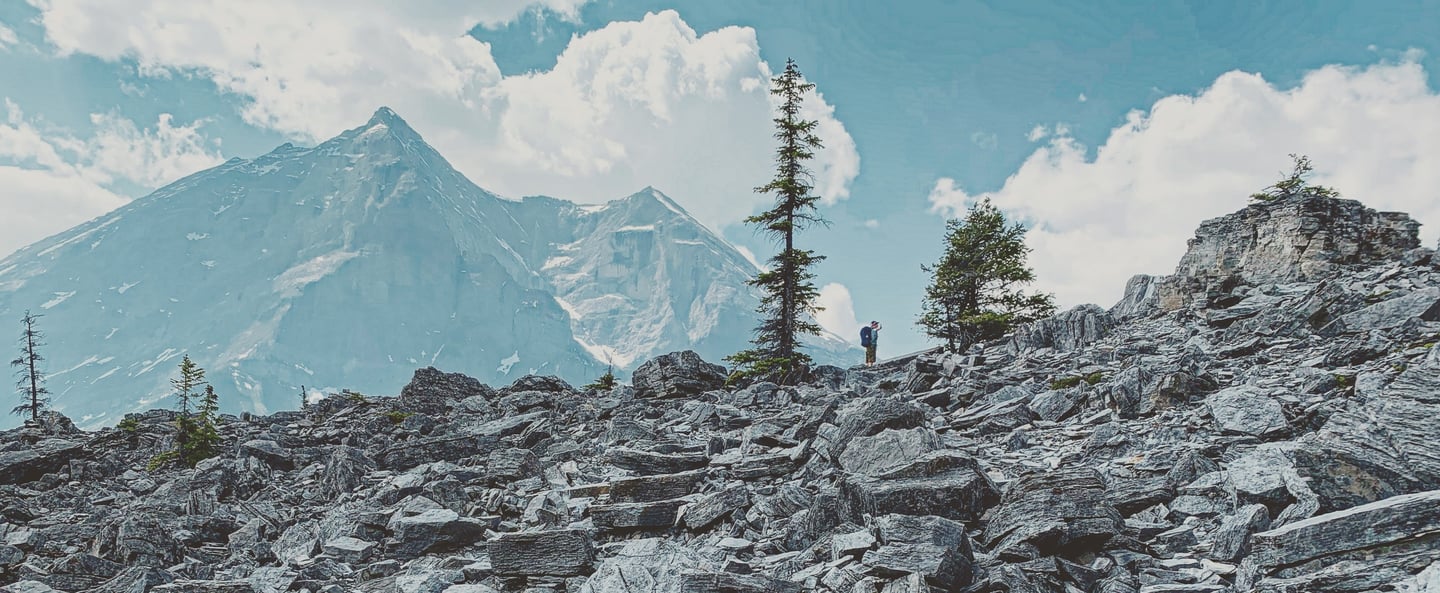Trail of those before us.
Rich Rawlyk


Our respect for Indigenous cultures across the world runs far and deep, occupying every inhabited climate zone and continent of the world, these diverse ethnic groups represent an important window into the foundations of modern Wayfinders. Nestled into the valleys and ranges of the world's mountains for centuries, indigenous peoples have been true wayfinders, the first explorers to set trails into these landscapes, scattered settlements linked through paths for socialization, trade and survival. Becoming worn into memory and earth the first trails emerged, these life lines enabled a livelihood and allowed family's to grow, humble beginnings that time deepened. The culture of its people are ingrained in the paths that weave it all together, spending time visiting and walking them, it is possible to witness how nature has shaped both the trail and its people.
The trails of the Canadian Rockies are the most familiar to us. By proximity and time spent hiking this network, we know their beginnings are similar to any mountain nation, linked to socialization, trade and survival. These areas and its trails however, have become worn from different intentions, the raw wilderness these trails access continues to evolve, offering iconic narratives, these majestic pockets of nature play a large role in Canadian identity, both internally and abroad. They connect us to the wild and free, characteristics that radiate from these remote spaces, here we merge our mountain culture with wilderness culture, a fine line with subtle distinctions, the later allows an access point to a different set of myths, different stories that illuminate us and we can see how our nature is shaping us. In identifying the places we travel, originally the lands of our indigenous peoples, we can trace our origins as a nation to the once faint pathways. They are now roads driven daily, summering spots turned city or towns, beaches where canoes softly came ashore host motorized boats swiftly on the move. Driving west on Highway One by Field, the train line through the Rockies reminds us that the ambition of joining the Atlantic and Pacific Oceans added the drama needed to accentuate the dream of an early Dominion. It's course has been a foundation for the formation of Canada as a nation, vital in forming our concept of Parks and informing our western development. Among these activities our admired trails and nature have become ingrained in our identity.
As the railway grew, it exposed our Canadian Rockies to the world and made them synonymous with adventure, new heights were to be reached alongside Swiss Guides, imported specialists hired to establish an industry, and brand the remote experience. The conception of our trail network was to promote a new wilderness. Sold was the chance to be the first among these mighty peaks and this was appealing. Countless names in our community and surrounding peaks owe their namesake to the European, American and other wealthy adventurers, seeking luxury and a chance to tame the wilderness. The imprint of these early brand ambassadors is evident throughout the park and area still; Outdoor recreations, architecture, education, fashion, etc. Introduced by each, they created a mix of society from all points exotic, it helped to contrast the rugged beauty of Banff National Park. The intention of our trails reached there objectives, the growth of our parks and trail systems becomes clear when contrasted with their origins.
Today the trail hosts so much of our culture, year round users we flock to our trails in one form or another to connect again with nature and refresh, what the trail attracts and offers extends globally. What the trail means to us, is what we work to capture and share, in both our products and our blog. Our goal is to get more people out to connect with the trail.
Wco
Indigenous influences on the trails we know so well.
Rich Rawlyk
